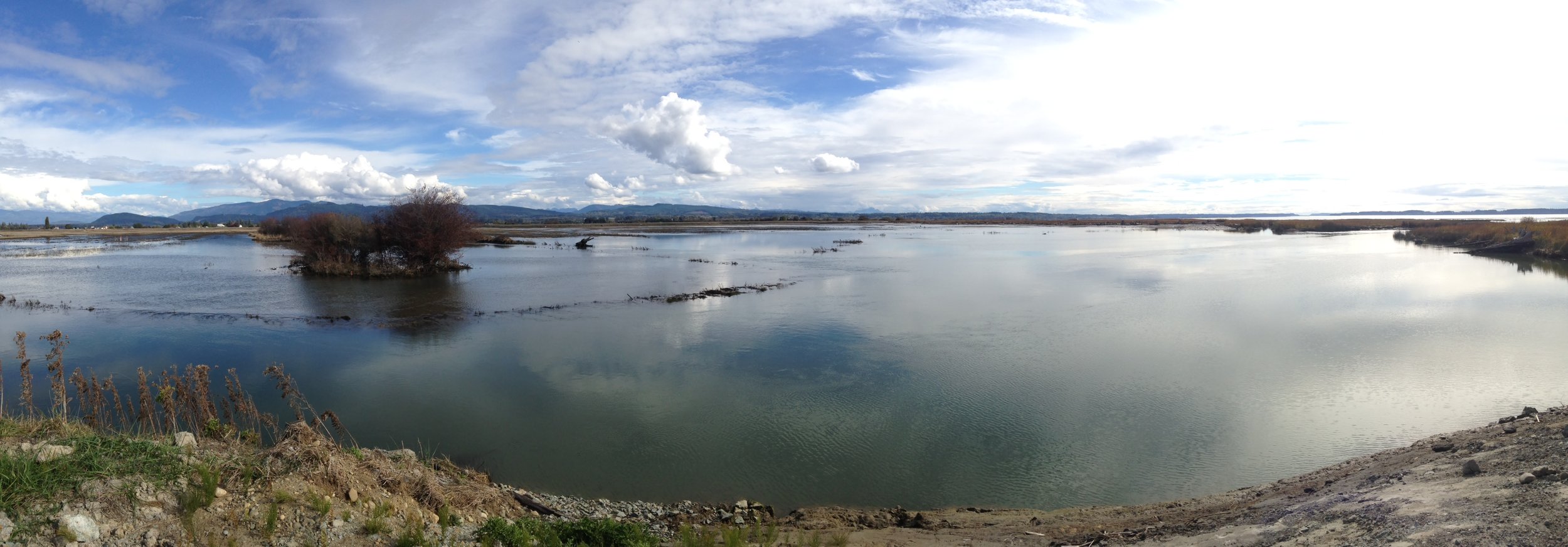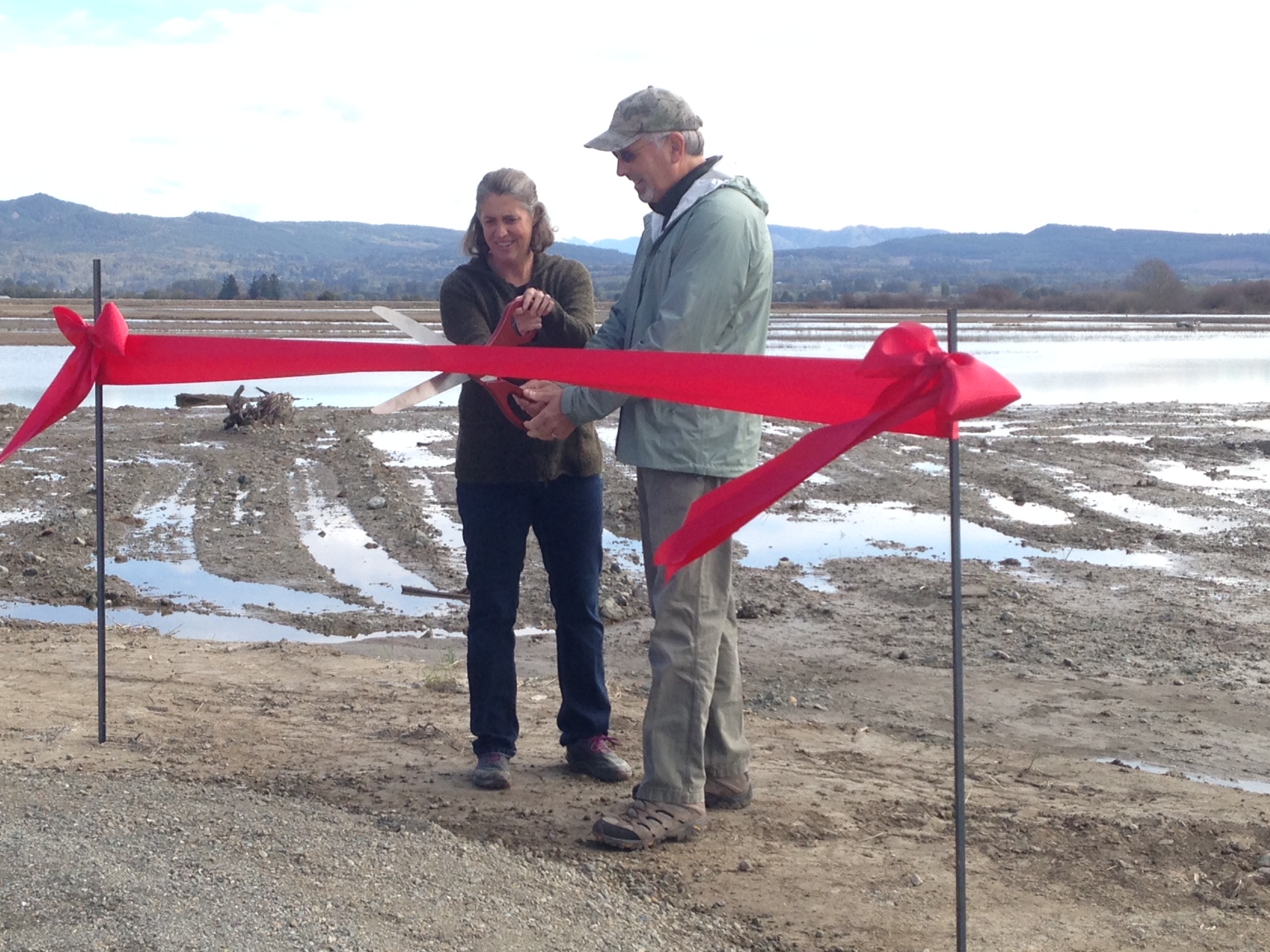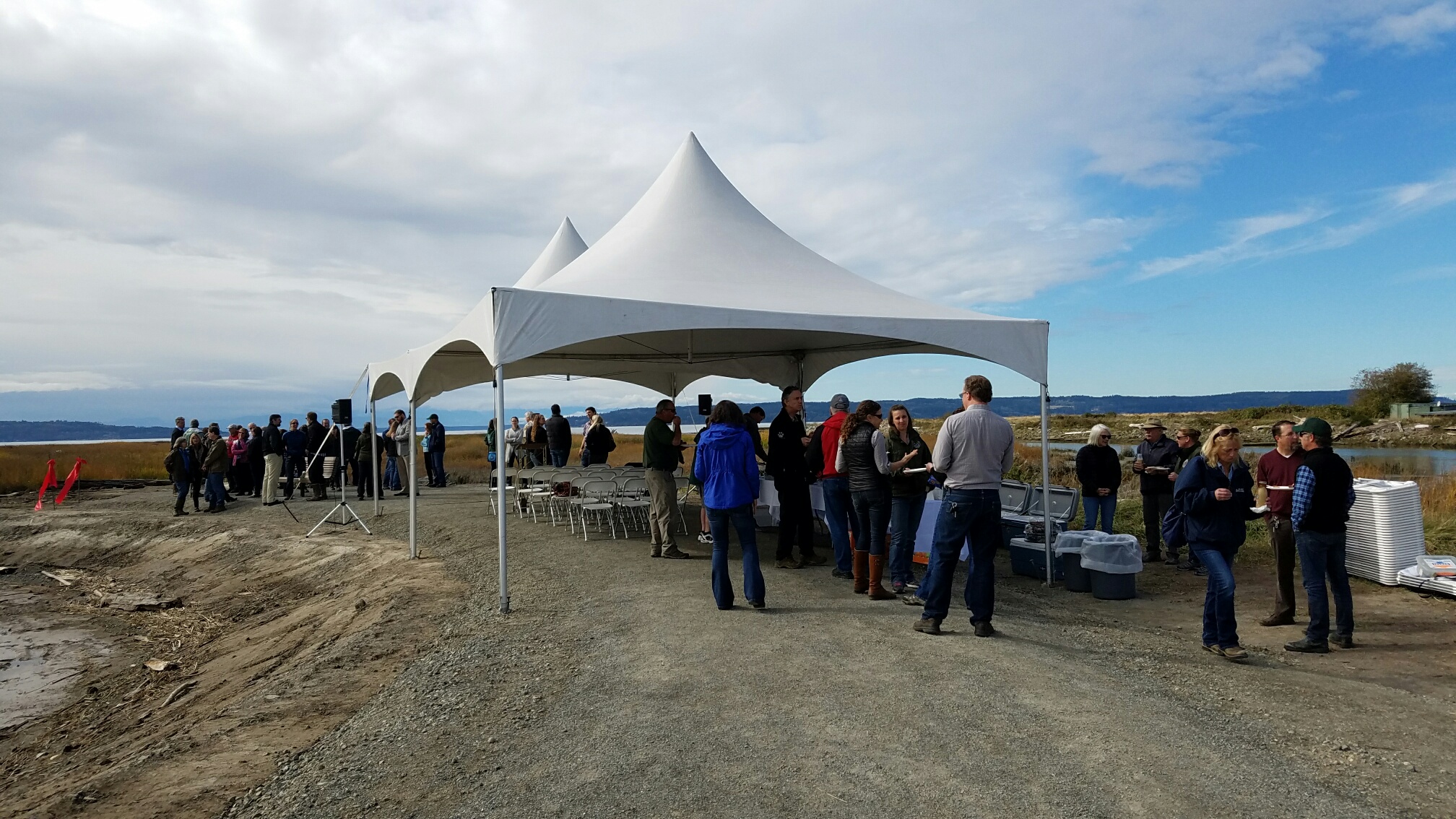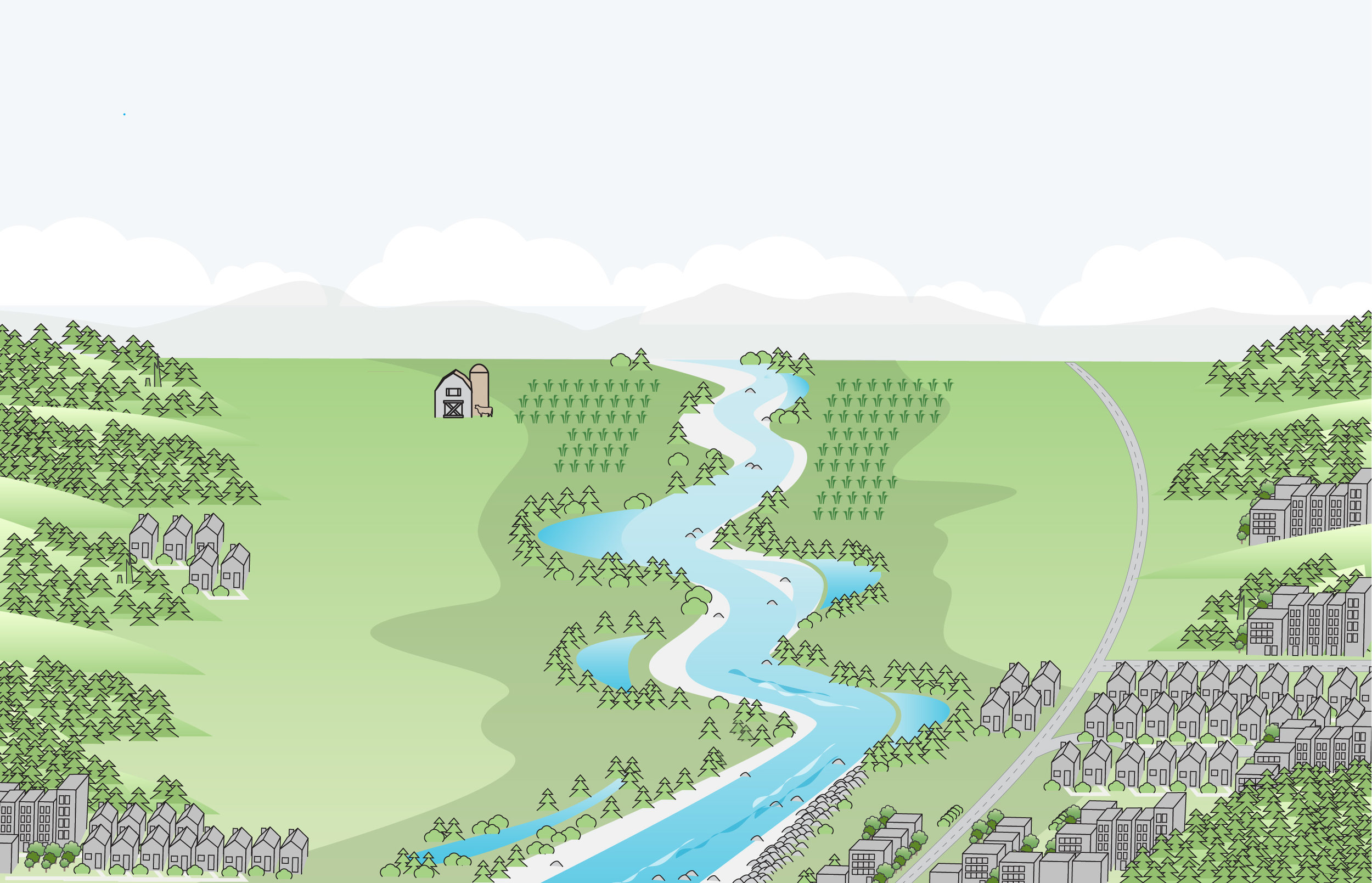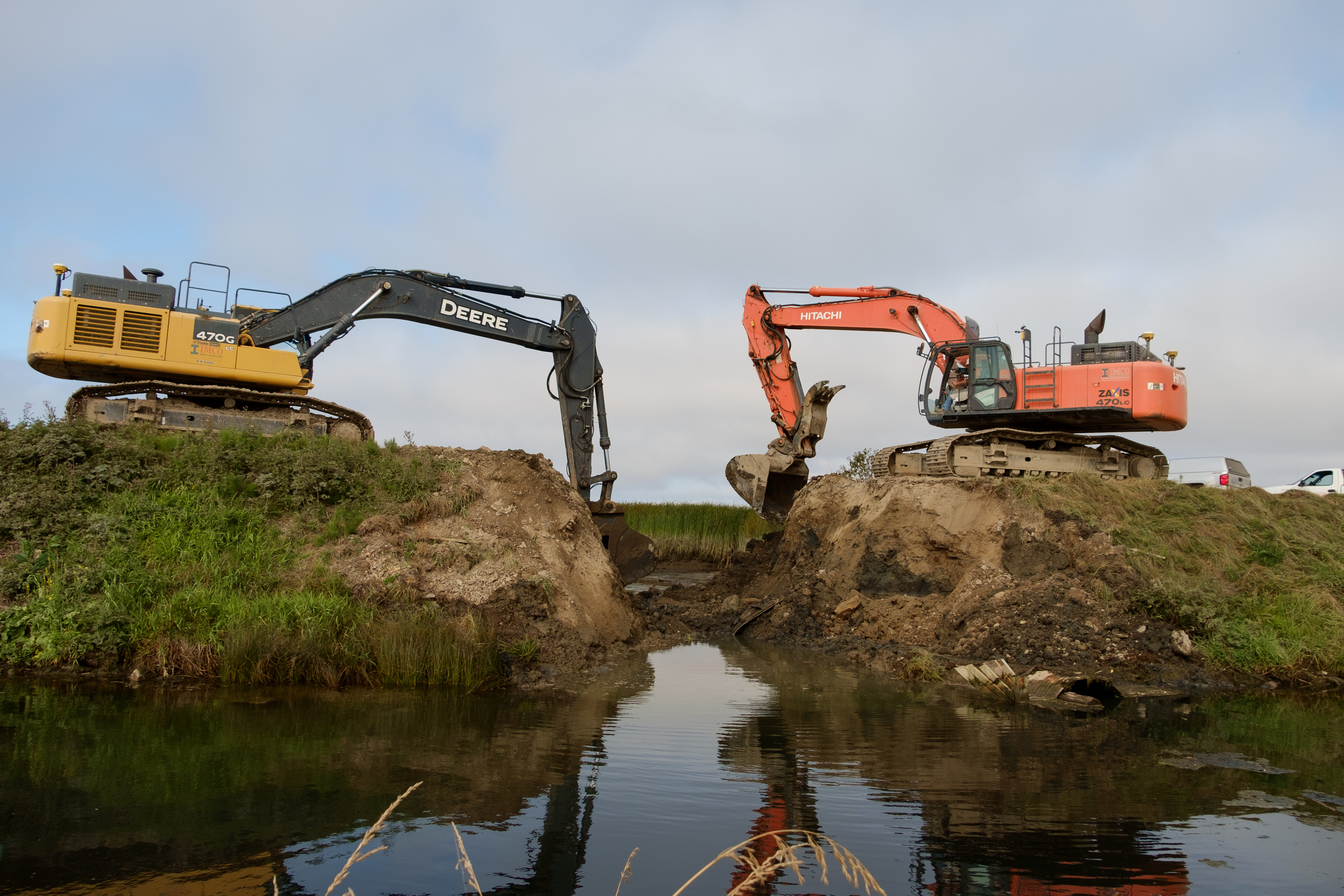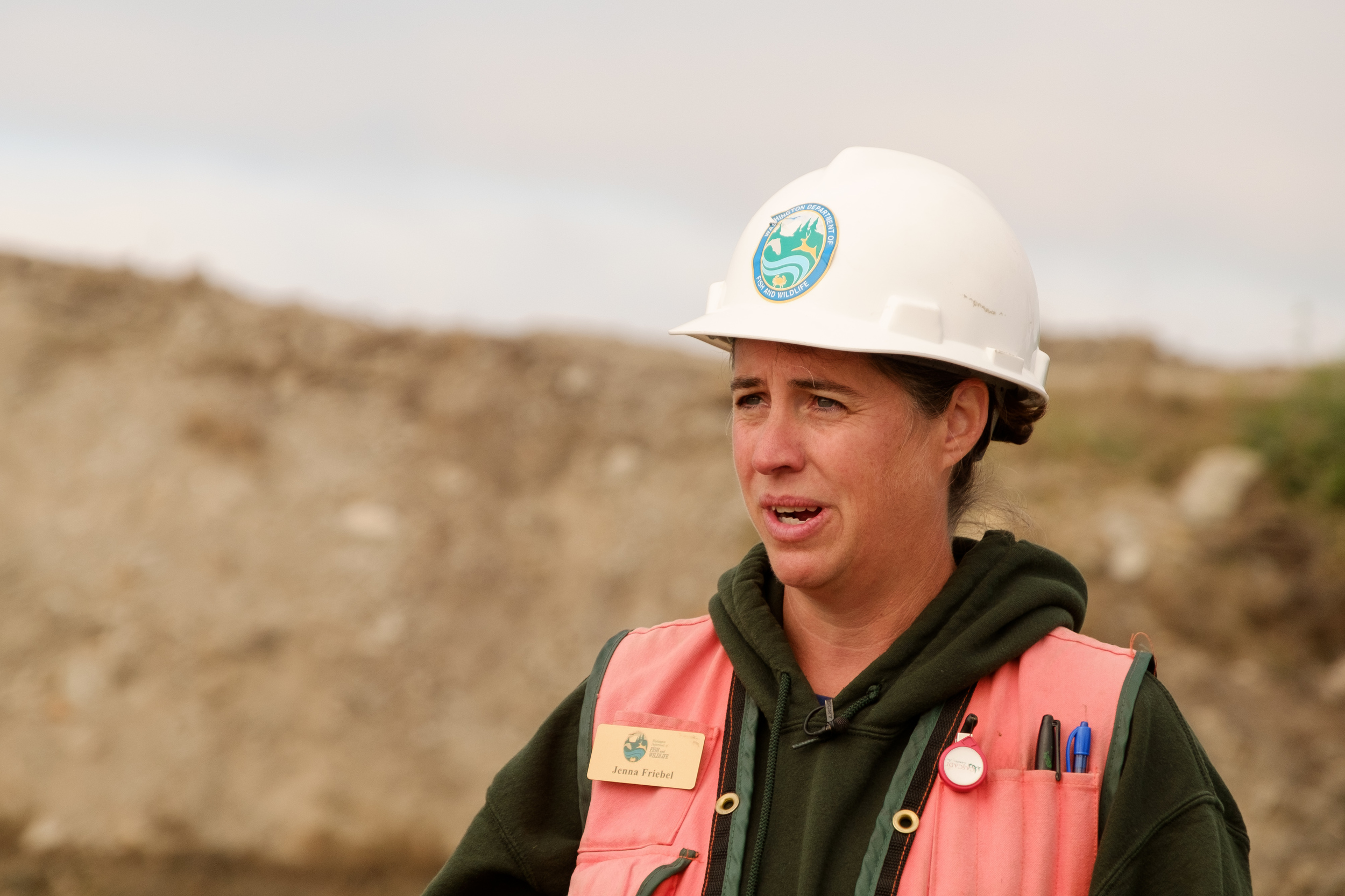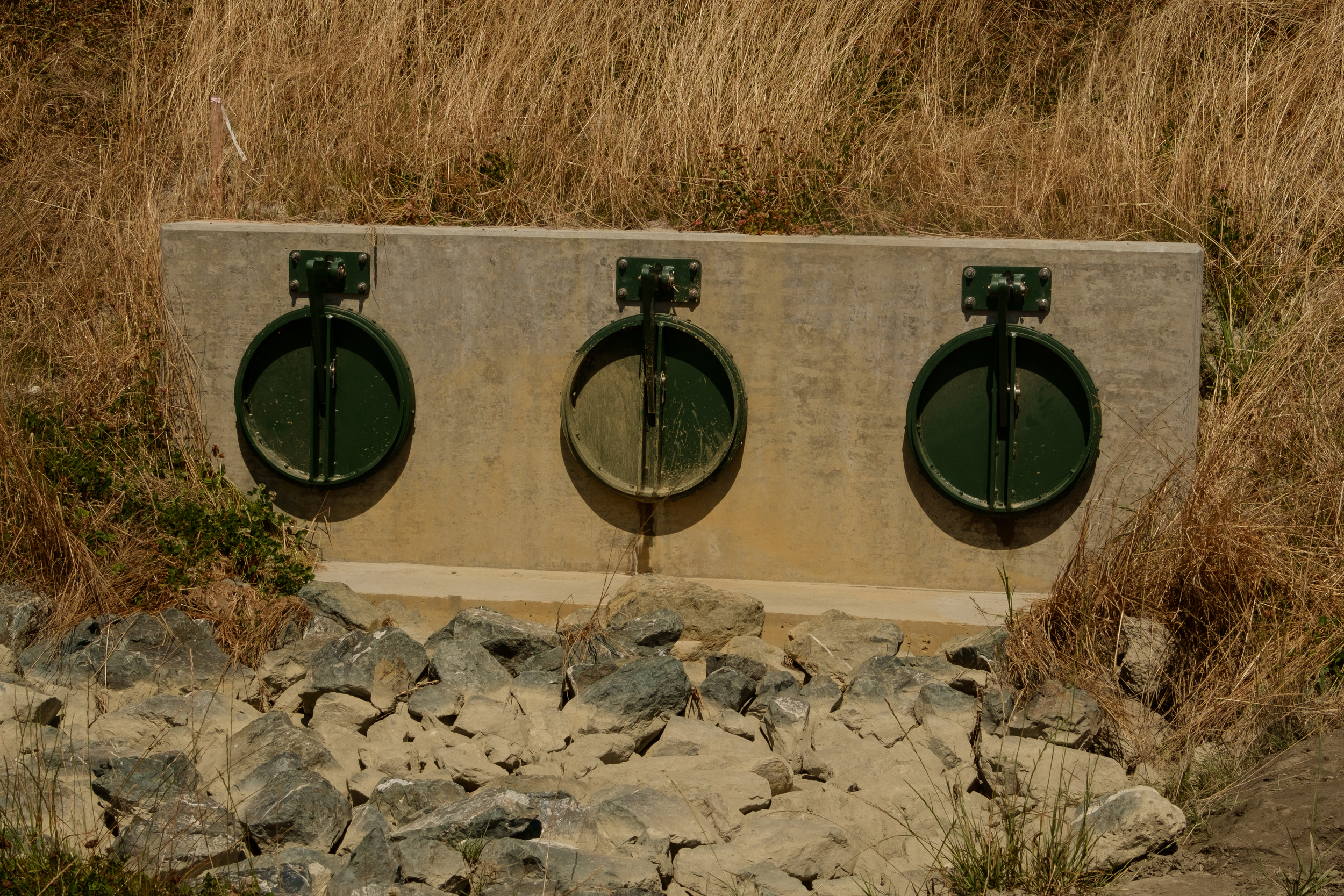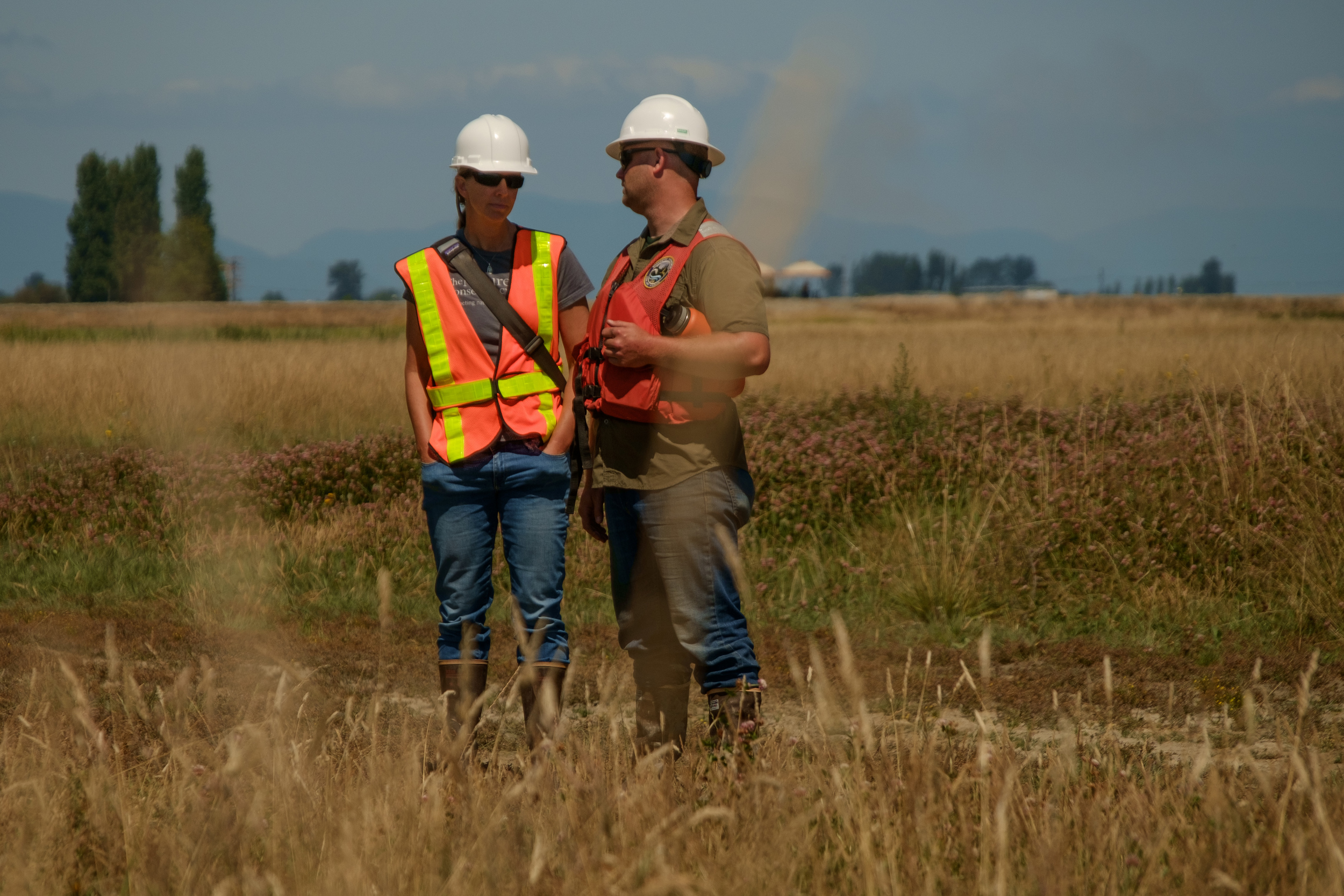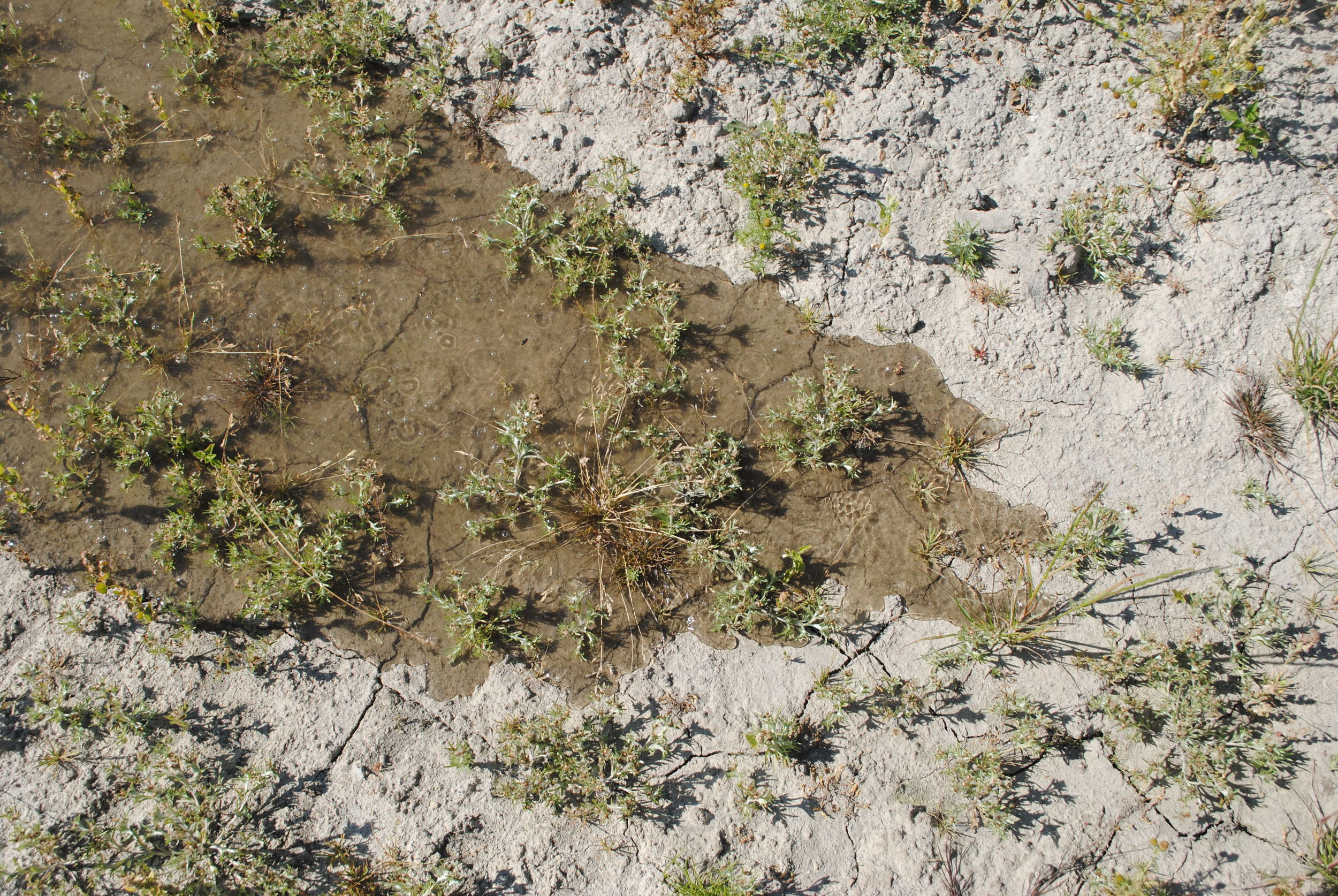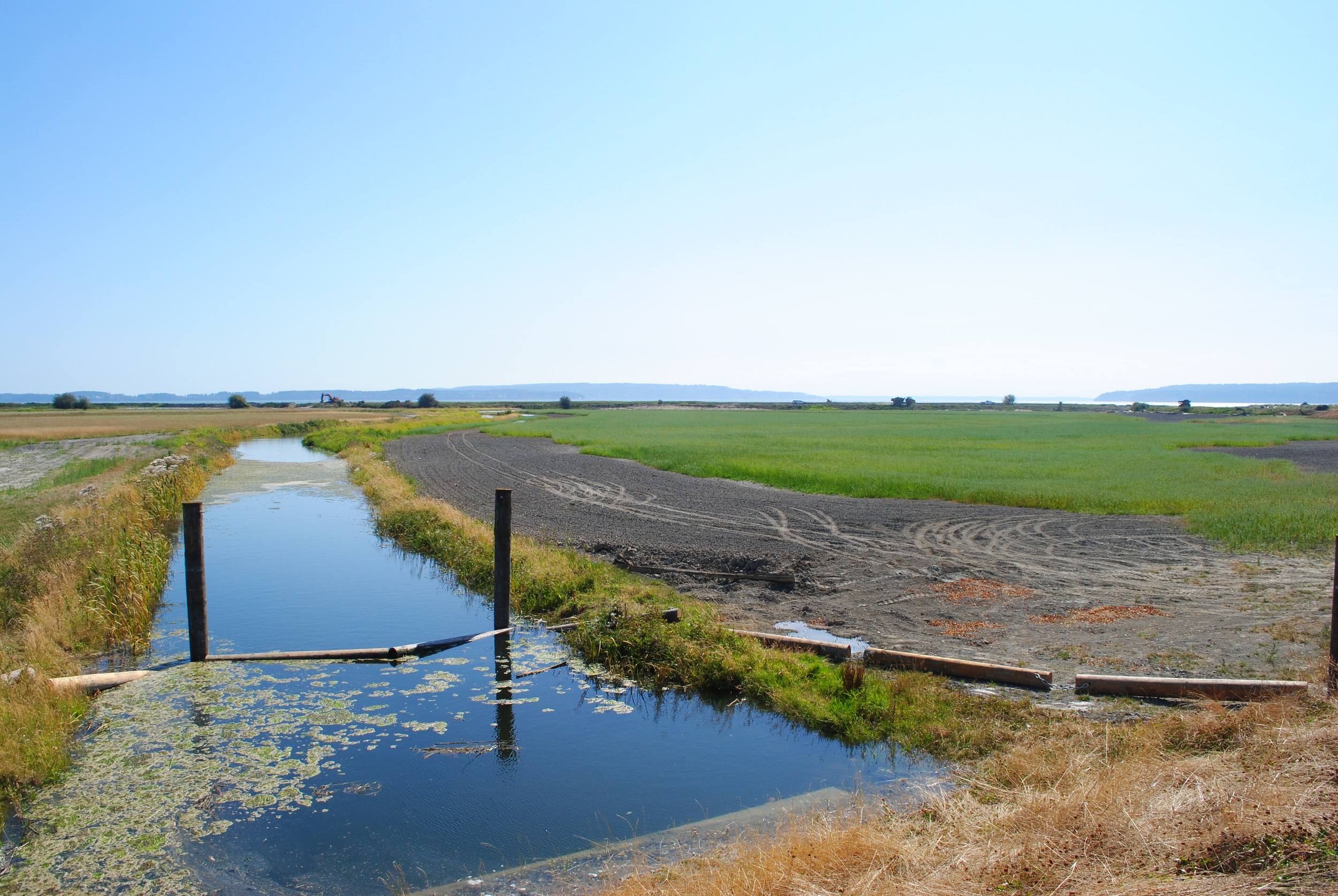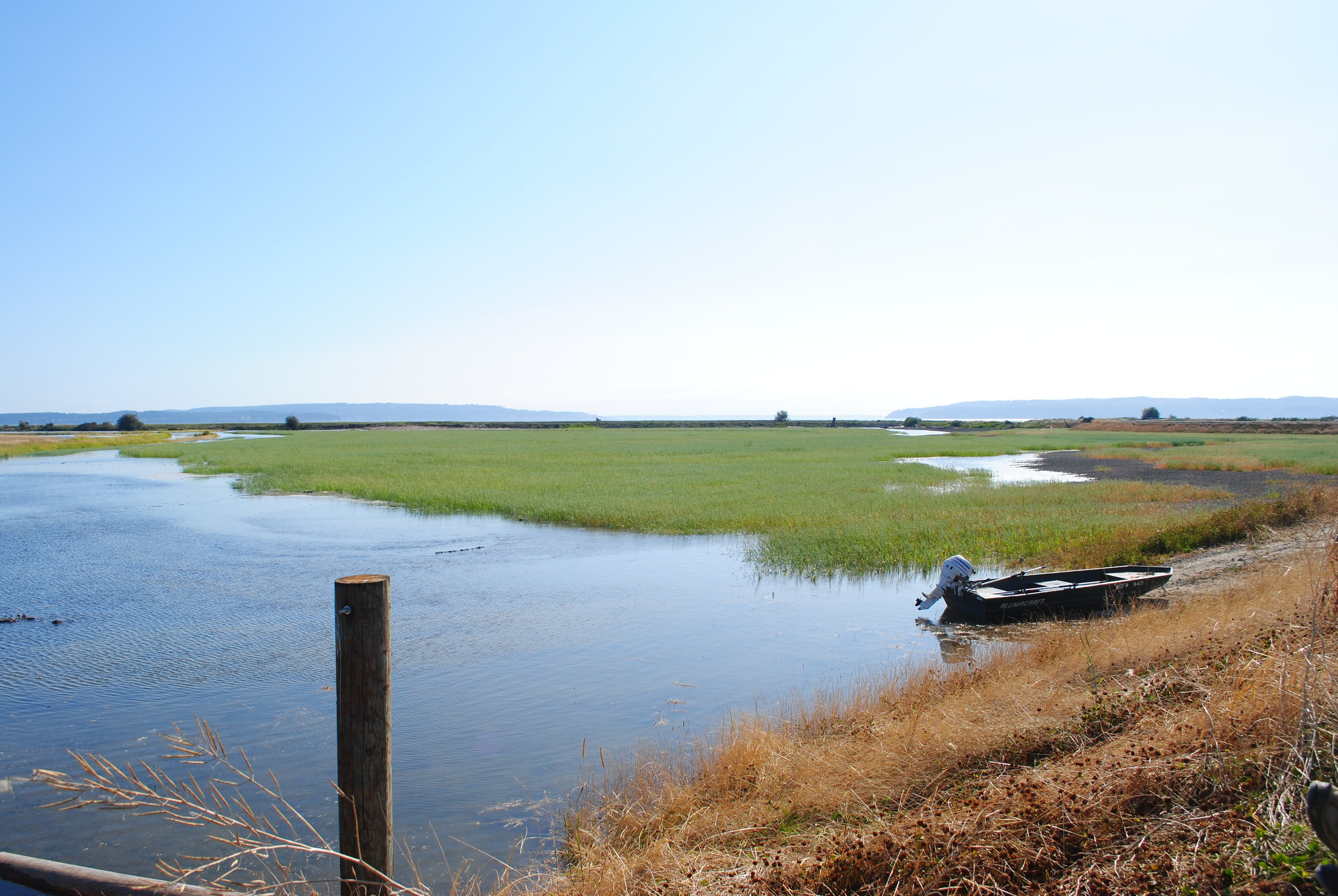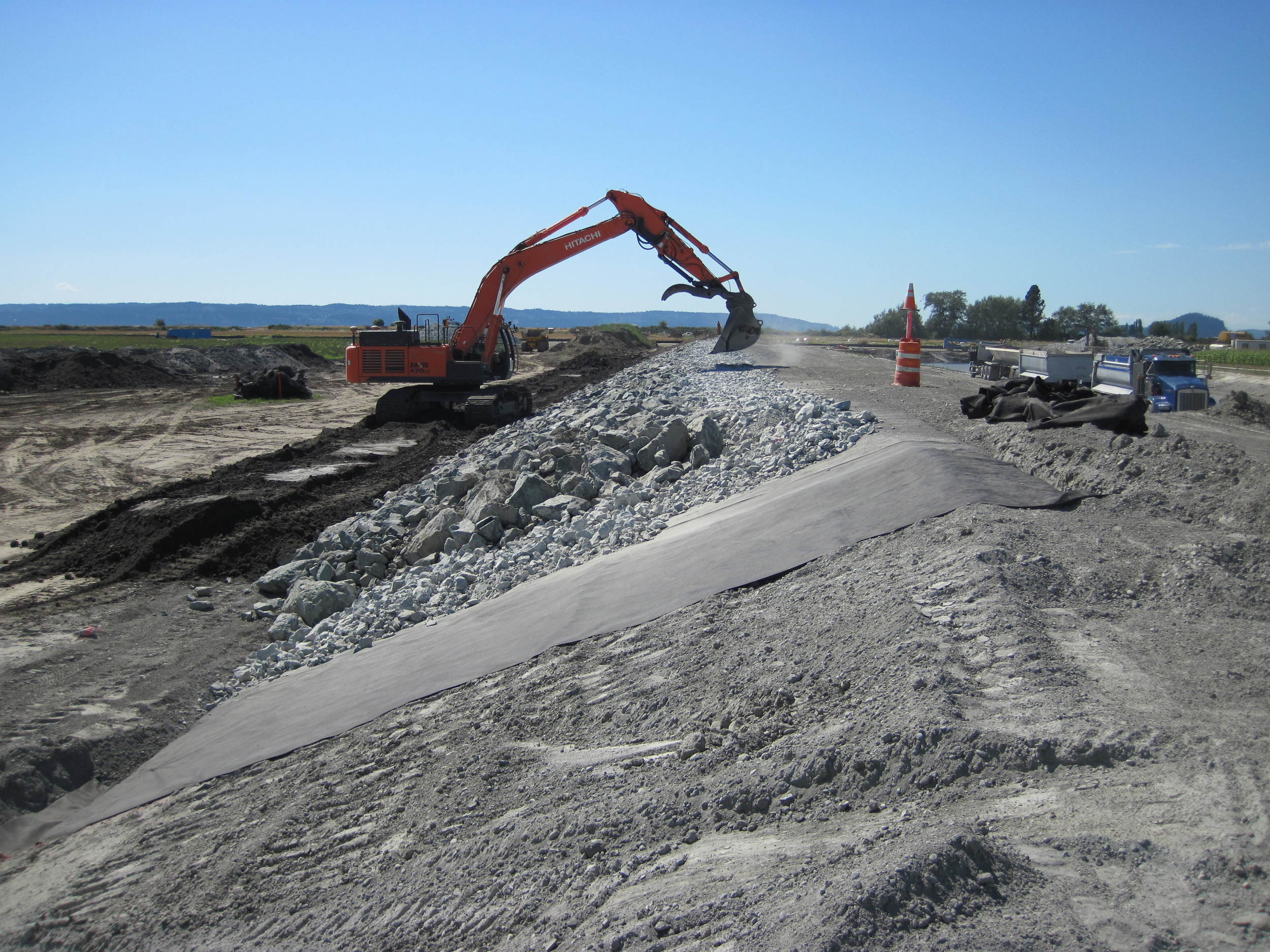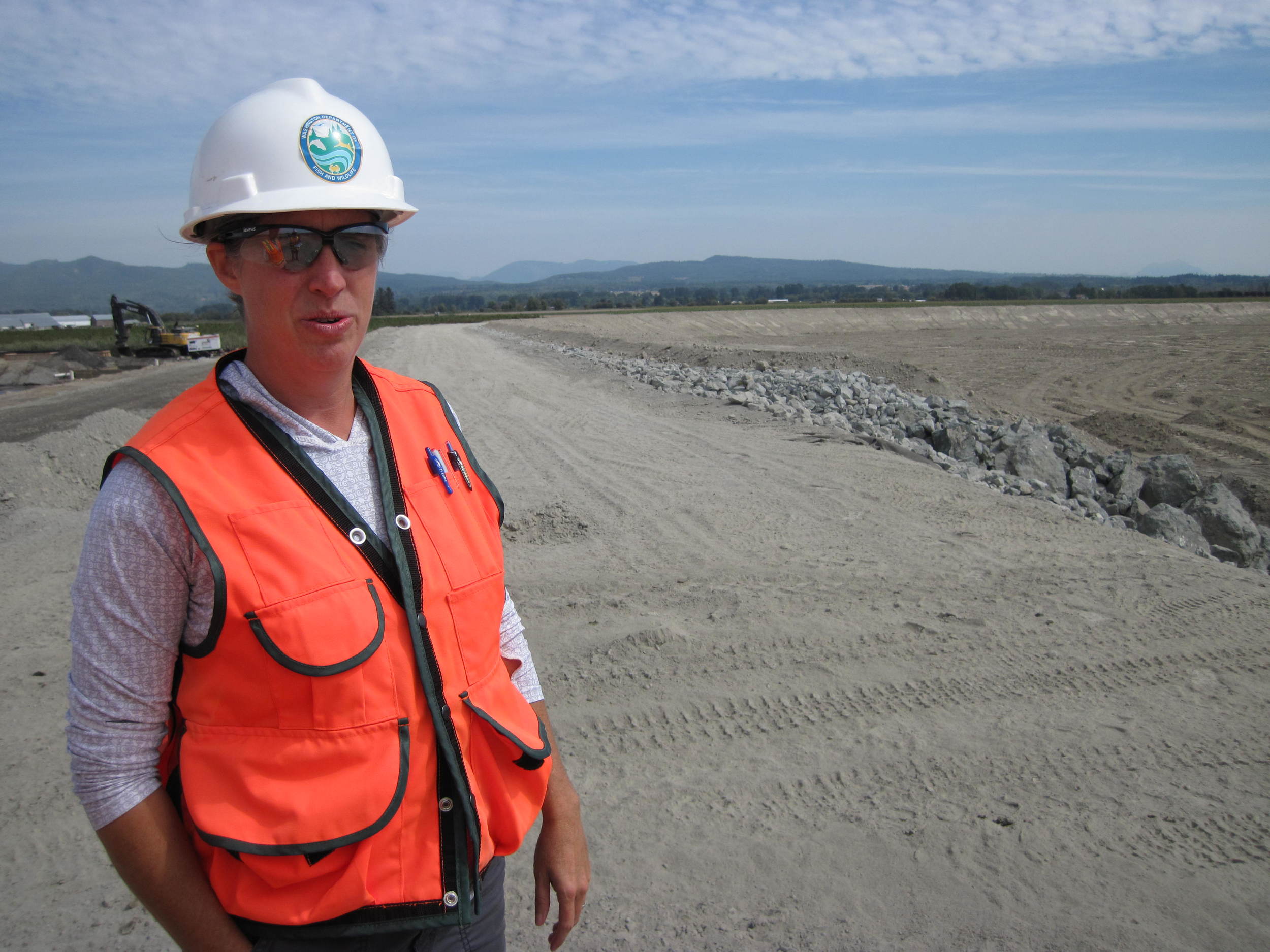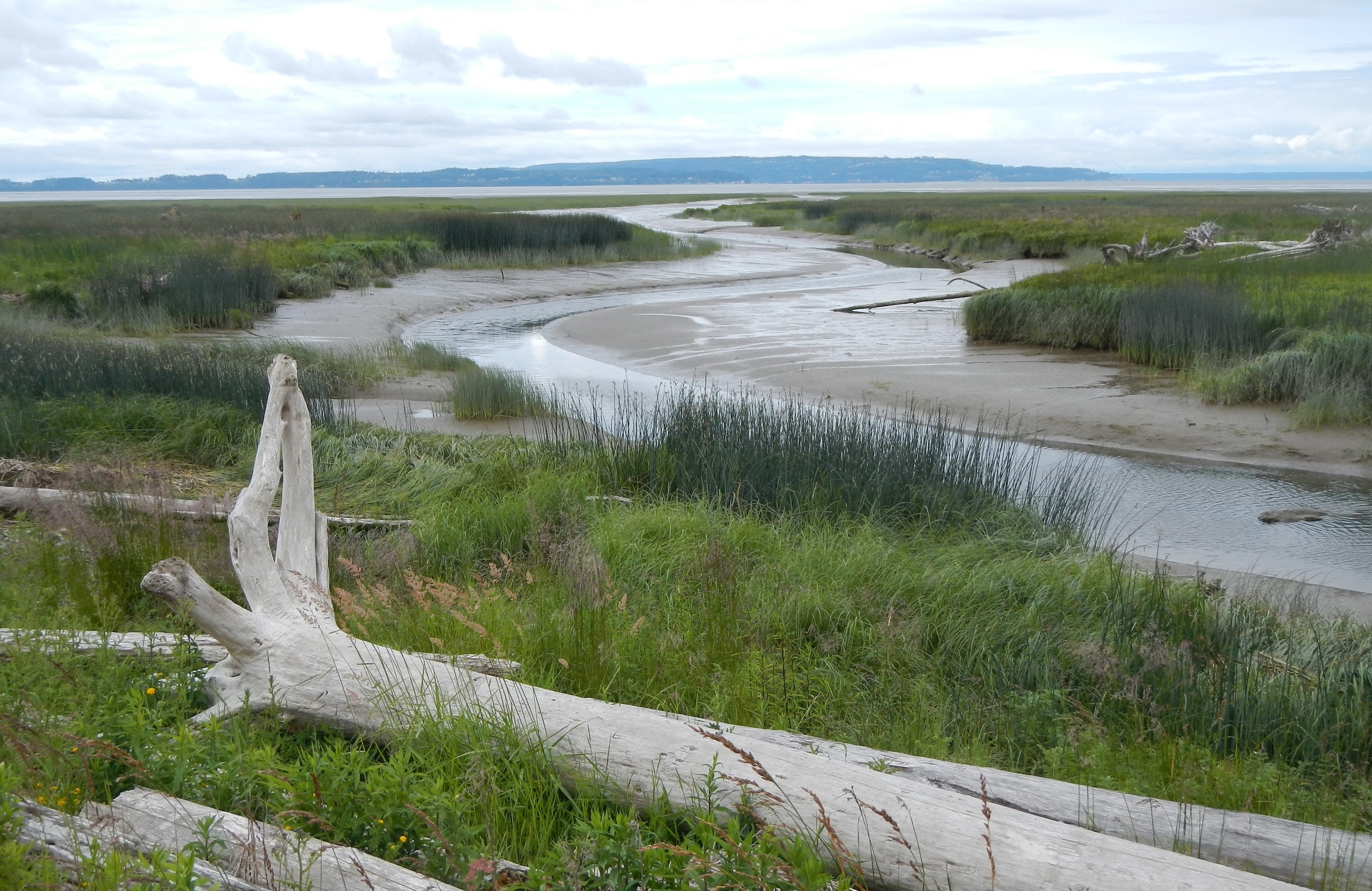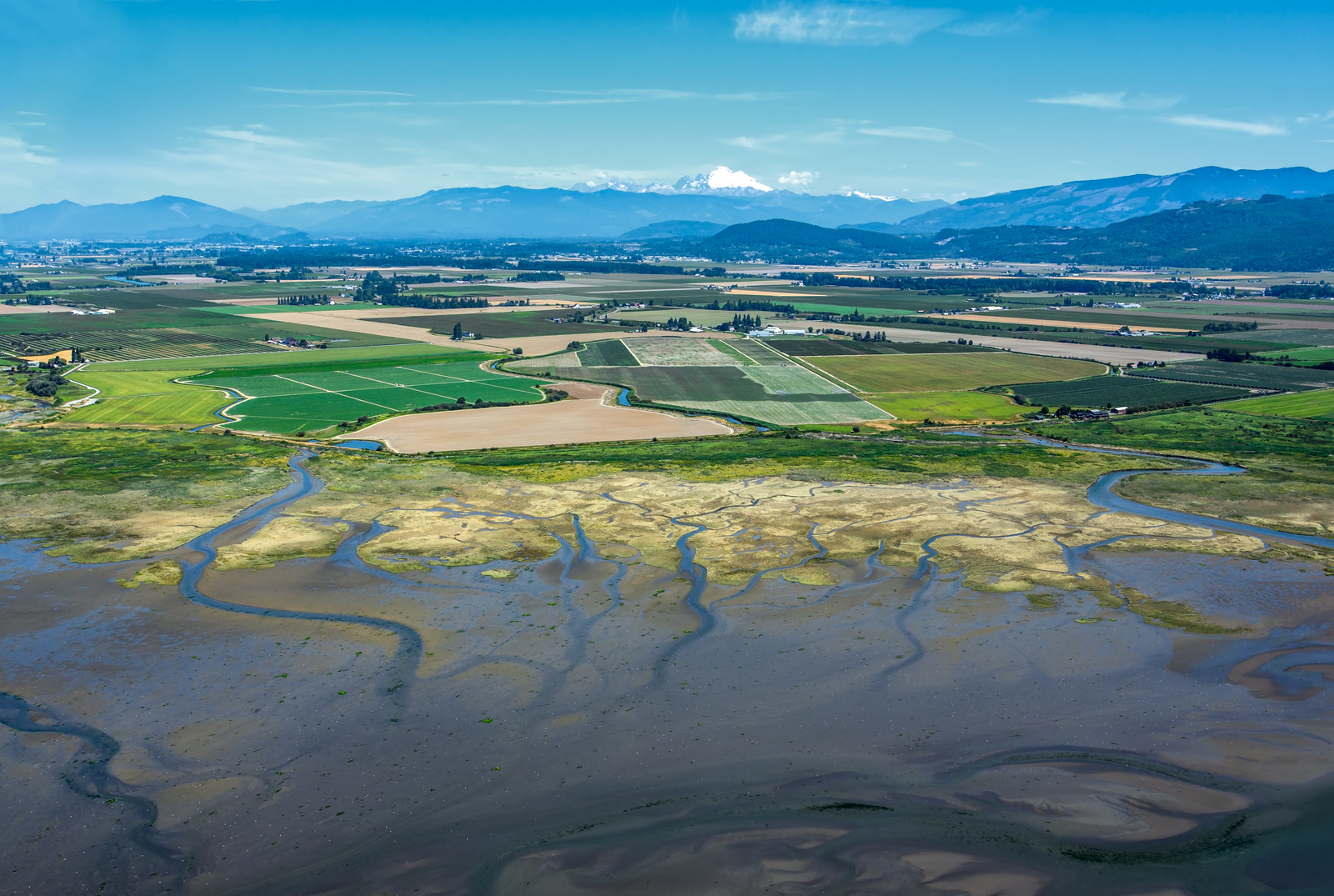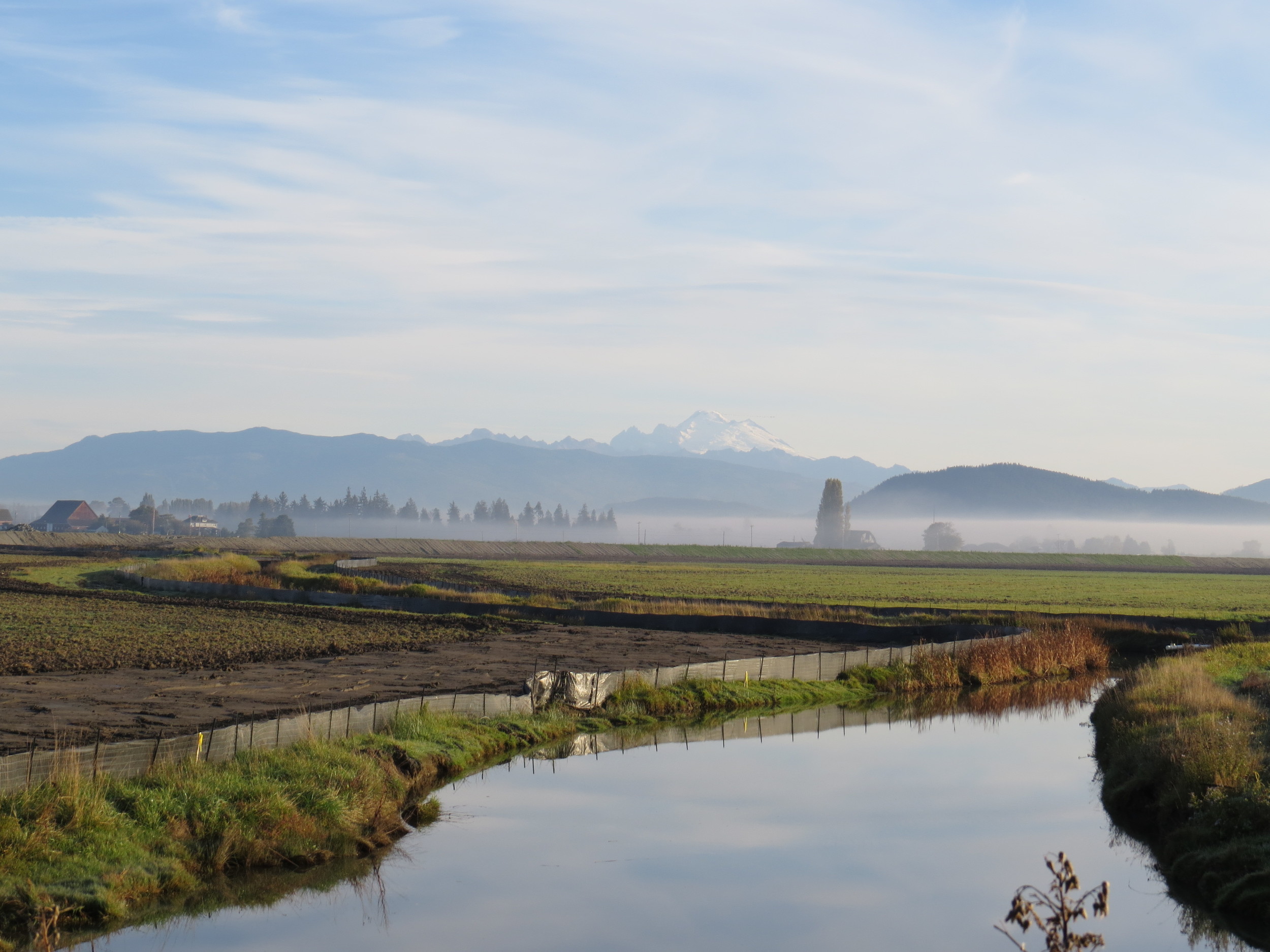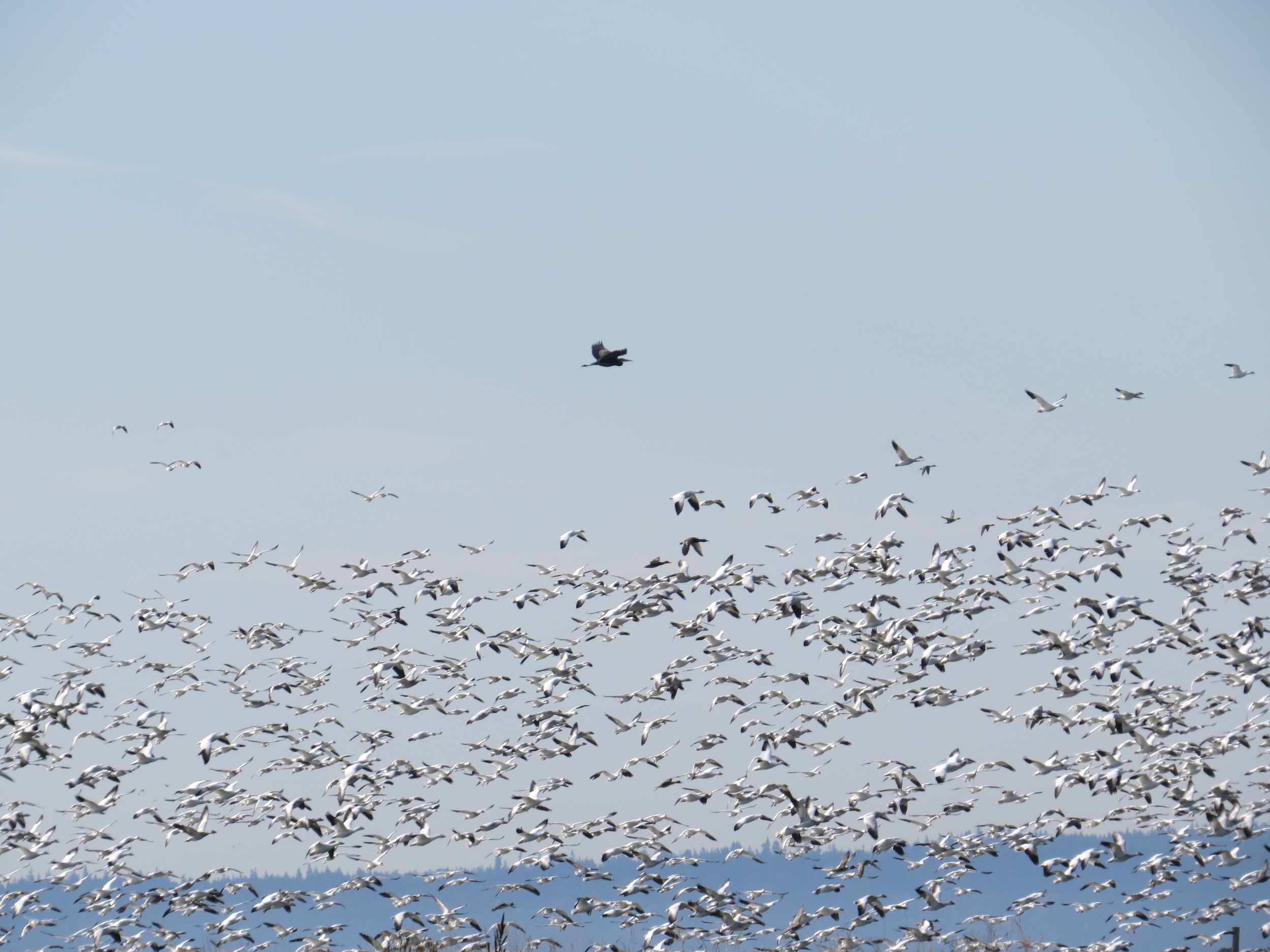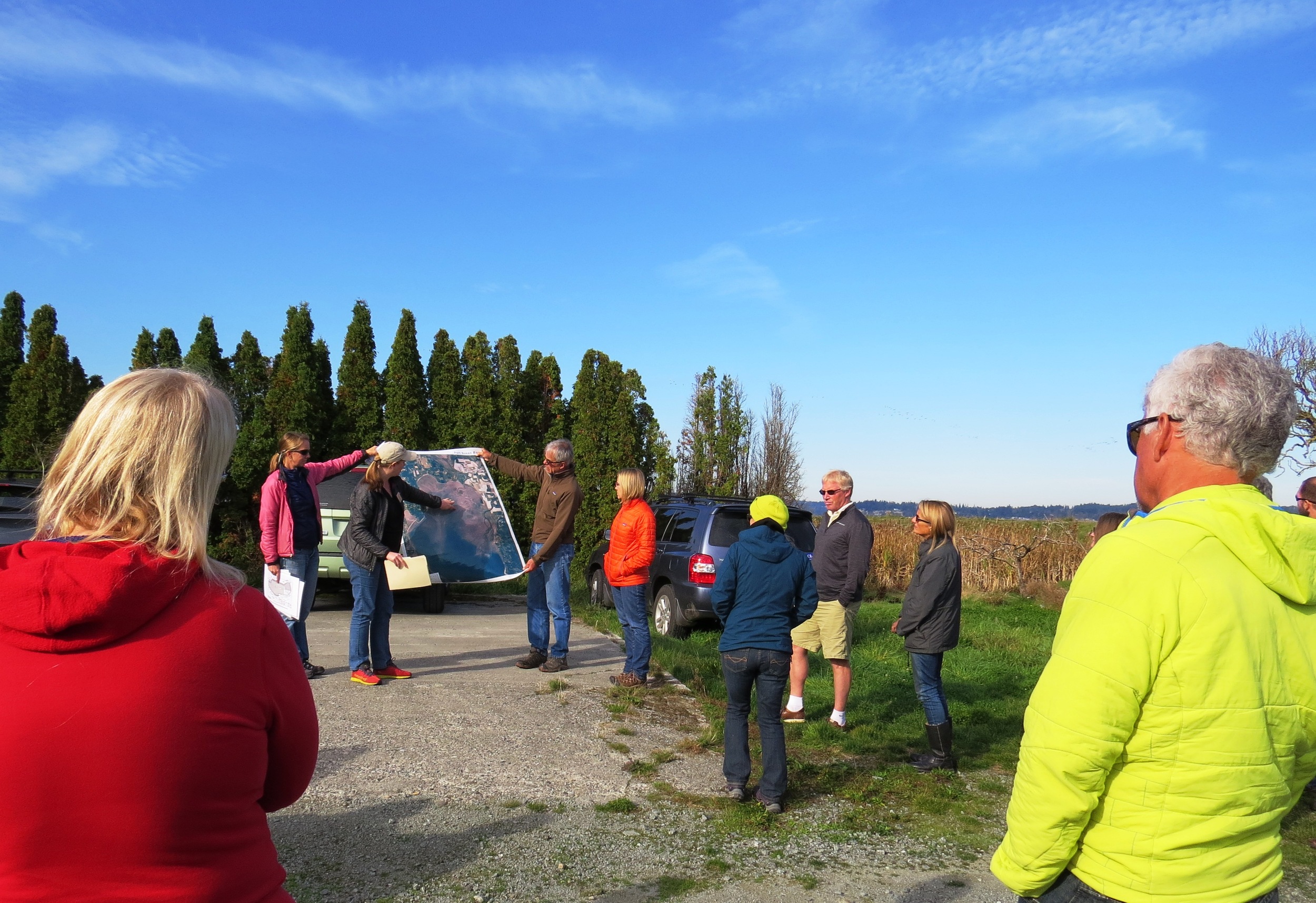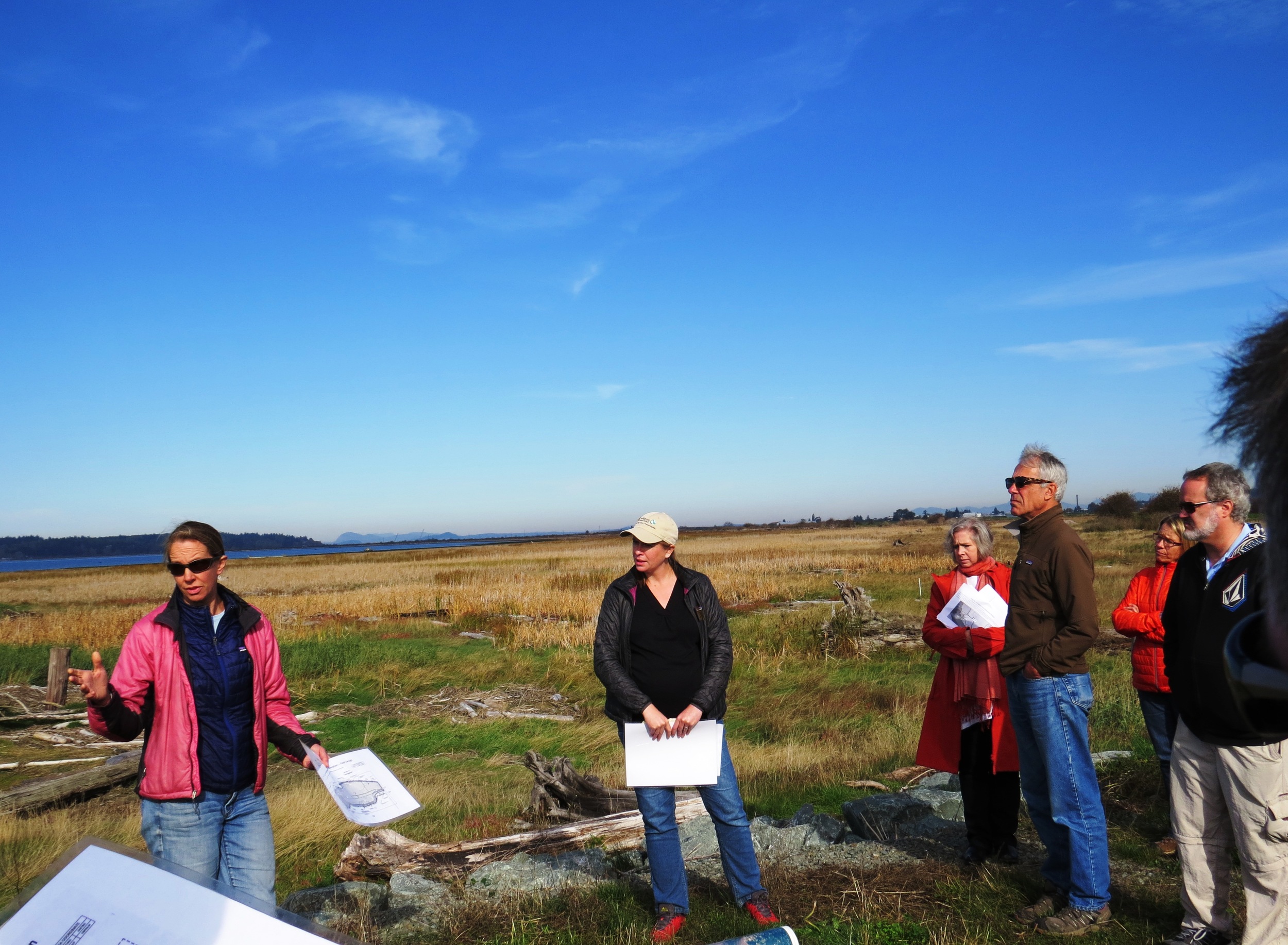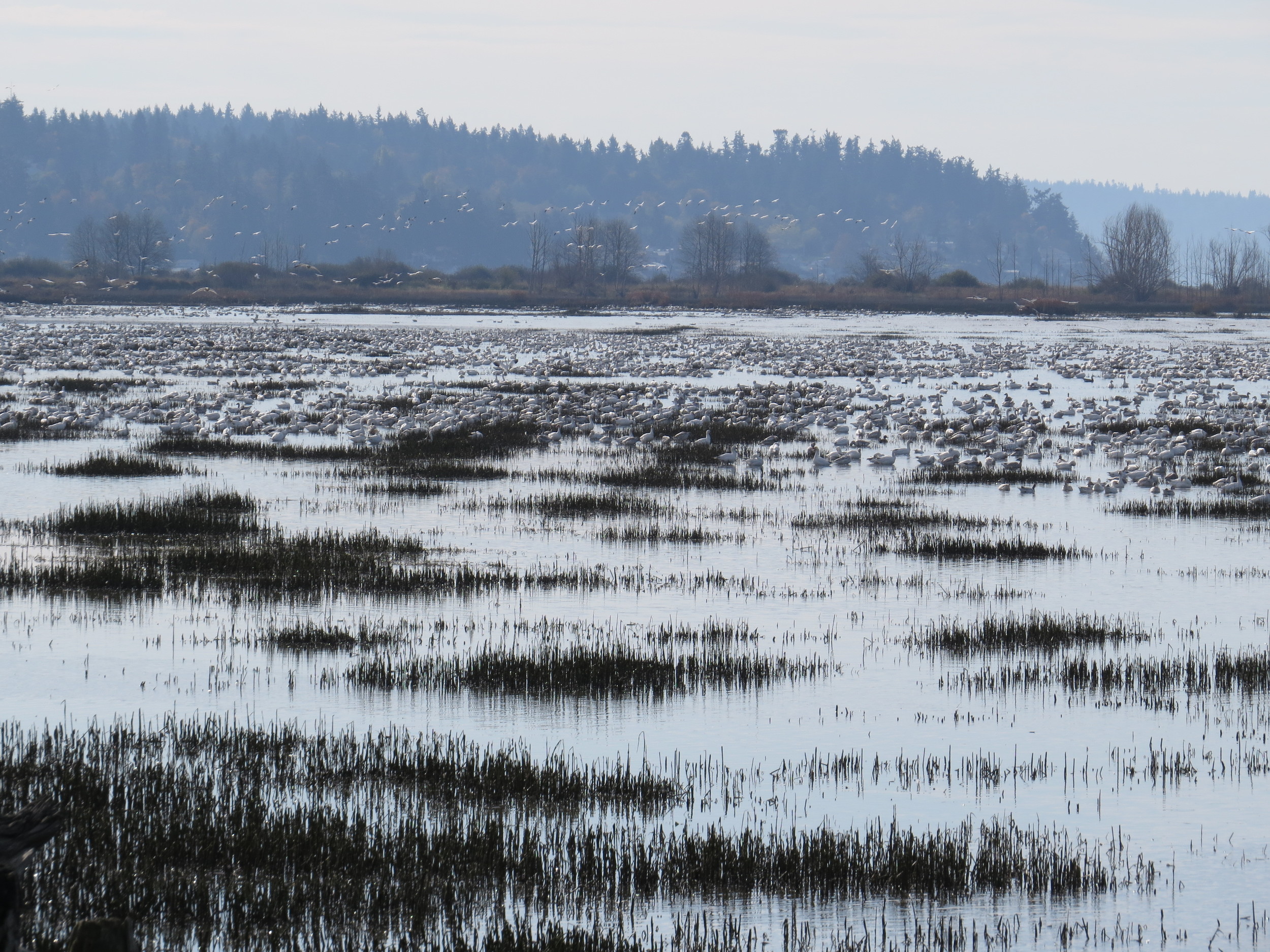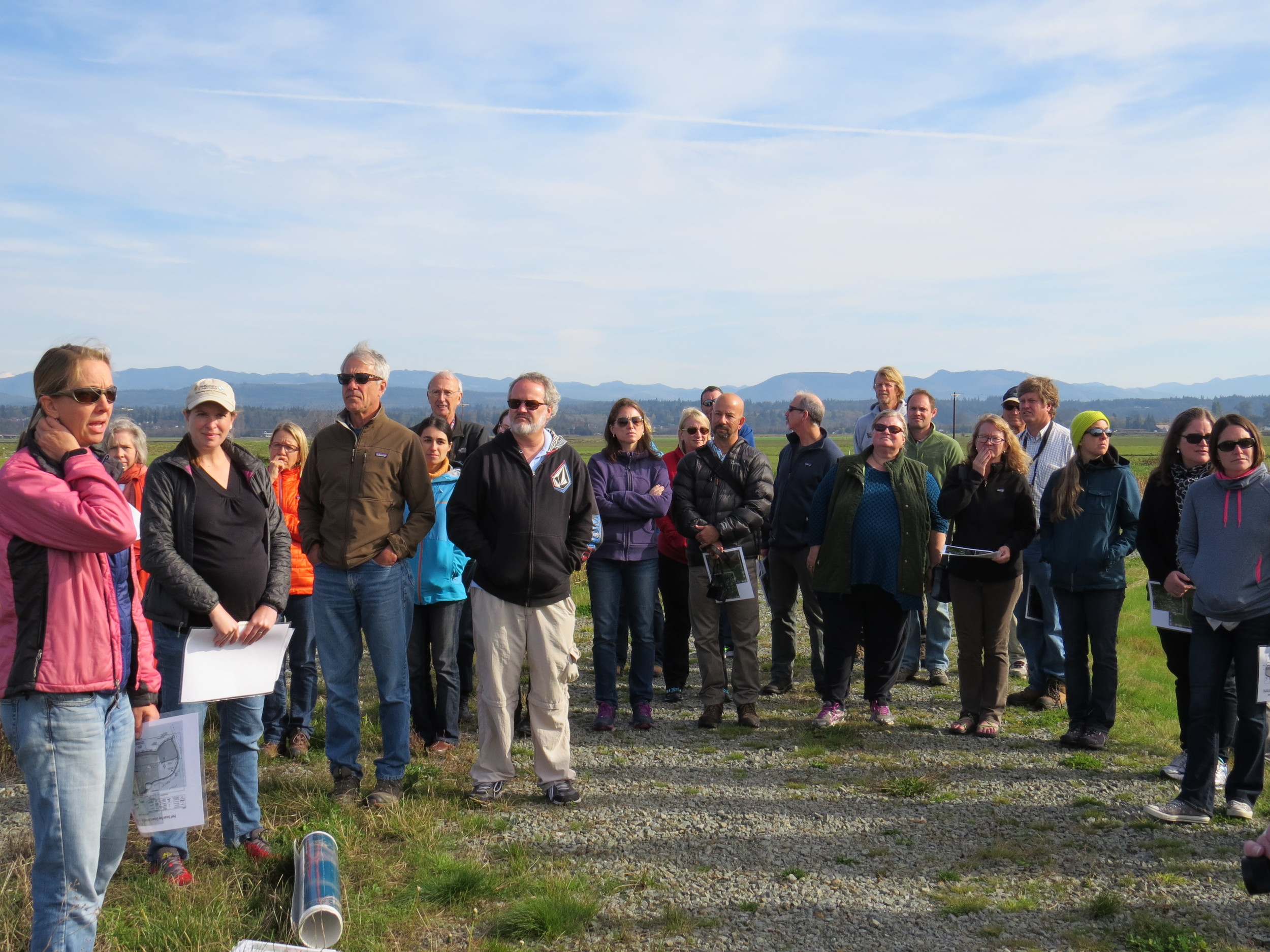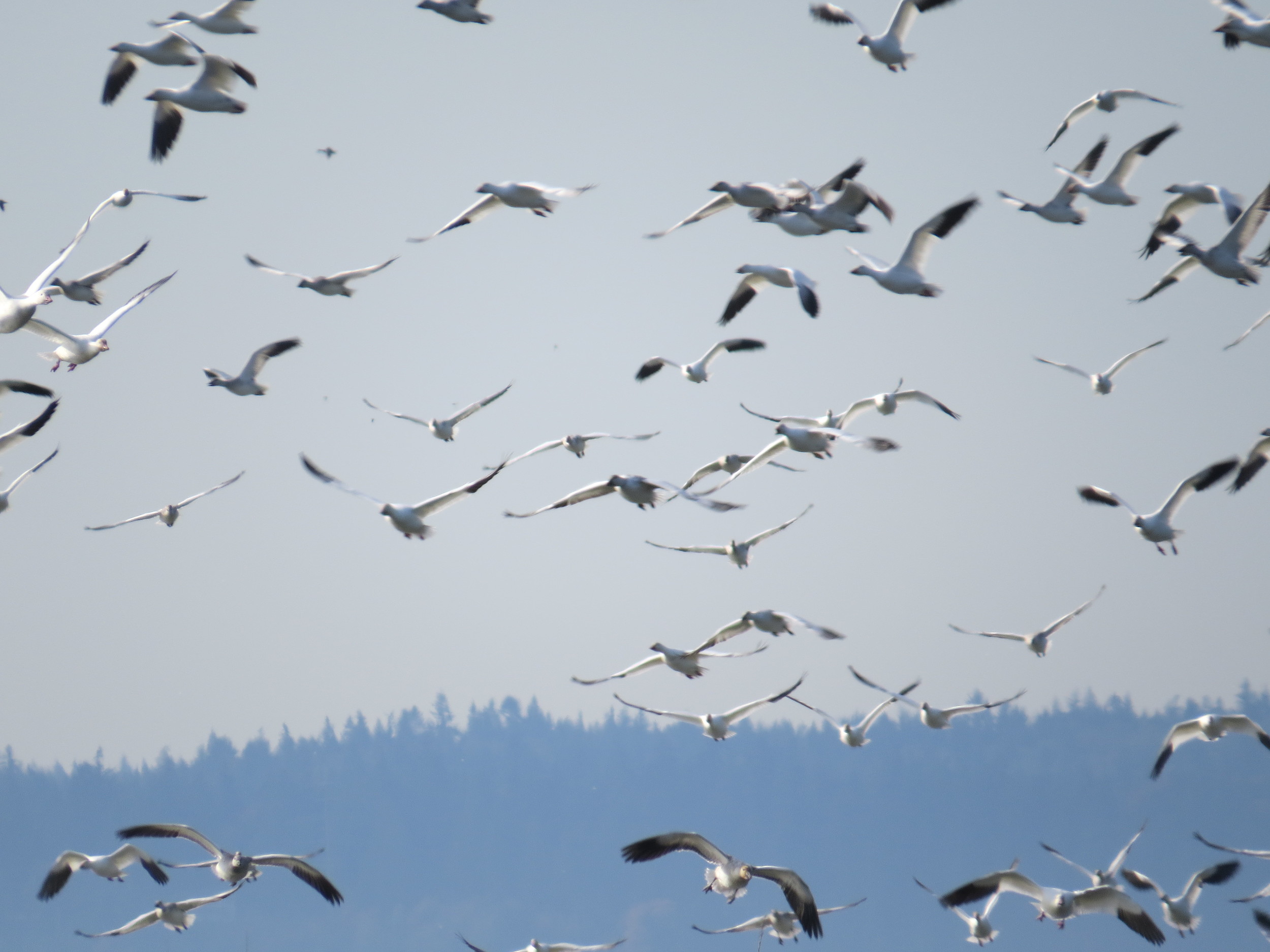By Jenny Baker, Senior Restoration Manager
Photos by Jeanette Dorner; Alison Hart, Washington department of Fish and Wildlife
The Fir Island Farm ribbon cutting was a wonderful event celebrating project completion with the large community of folks who have helped usher the project to the finish line over the last seven years.
This 131-acre project restores habitat for salmon, improves flood protection and drainage infrastructure for agriculture and provides public access at the intersection between the fertile farms of Fir Island and the salty marsh beyond.
See the breaching of the dike that let the tide back in after 100 years.
A new dike keeps neighboring farmland dry, while we still make room for thousands of juvenile salmon. Read more about the project here.
Floodplains by Design—a collaborative and community driven approach for reimagining floodplains—is being used as a model for flood prevention and management across the U.S. and internationally, creating floodplains that work for people and nature
Indigenous leadership in Washington and Canada are drawing from the lessons learned by Floodplains by Design to mitigate severe flooding events seen in the Fraser River.
Legislators in the state Senate must pass HB 1099 in order for Washington to build a climate resilient future and drastically reduce our carbon footprint that’s exacerbating the climate crisis.
Washington state’s innovative Floodplains by Design program is leading the way toward holistic river and floodplain management, bringing together all the benefits of investing in river restoration: communities protected from flooding, thriving farms, habitat for salmon and other wildlife, clean water, and recreational opportunities.
Explore maps that show how fluid rivers in Washington state have been over time.
How do we solve big flood events? By listening and learning from each other.
In the Pacific Northwest, every major flood has been associated with an atmospheric river event. What exactly is an atmospheric river?
Floodplains are all around us, quietly at work, providing rich soil for our farms, habitat for our salmon and beautiful backdrops for our lives.
What's the purpose of a launching toe? Learn about projects that are restoring floodplains and estuaries in north Puget Sound for juvenile fish and improved flood control.
As important as estuary and floodplain restoration is to the health of Puget Sound’s water, salmon and people, it is rare to be able to fully document project outcomes.






